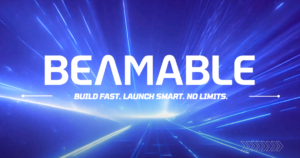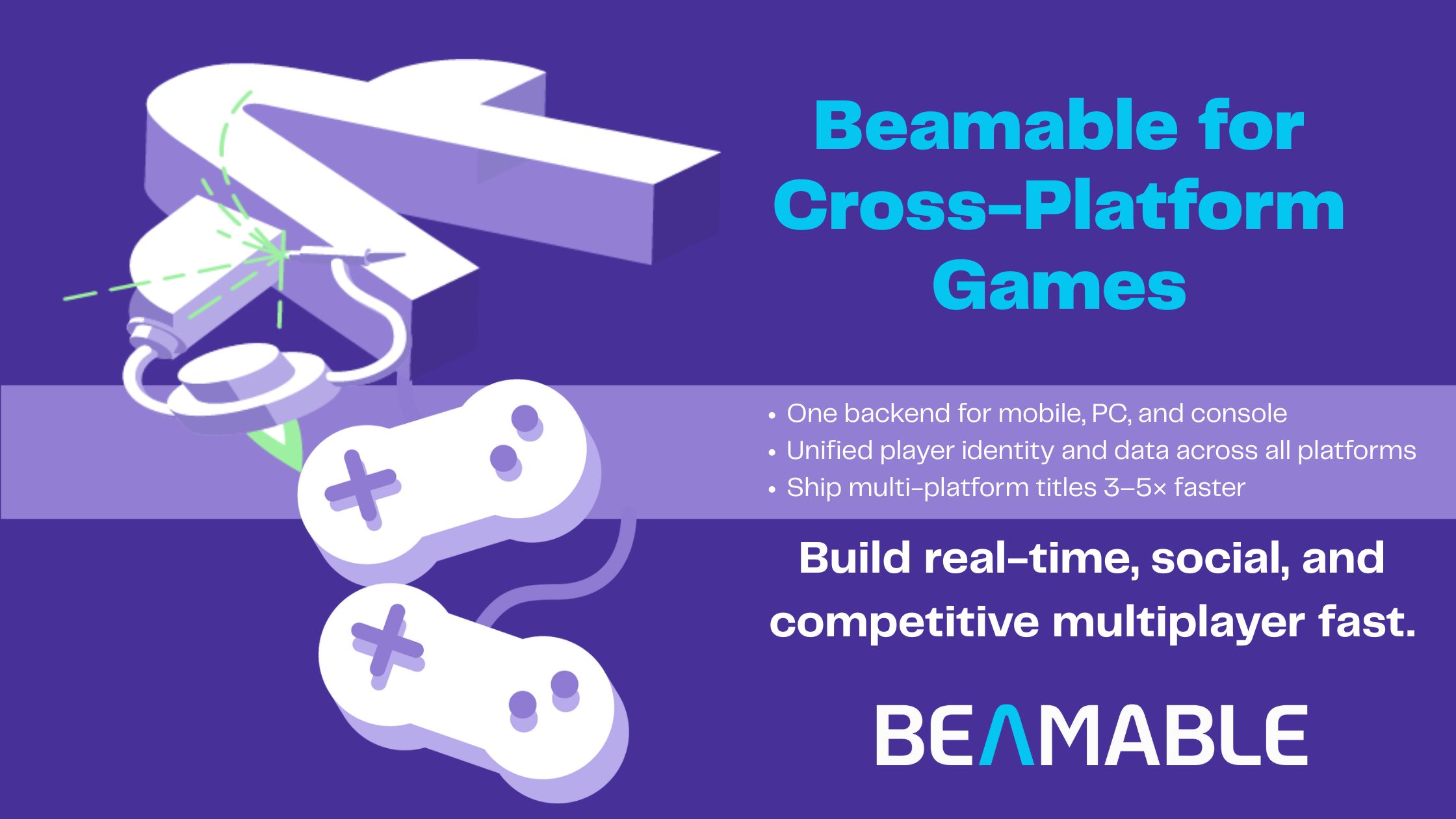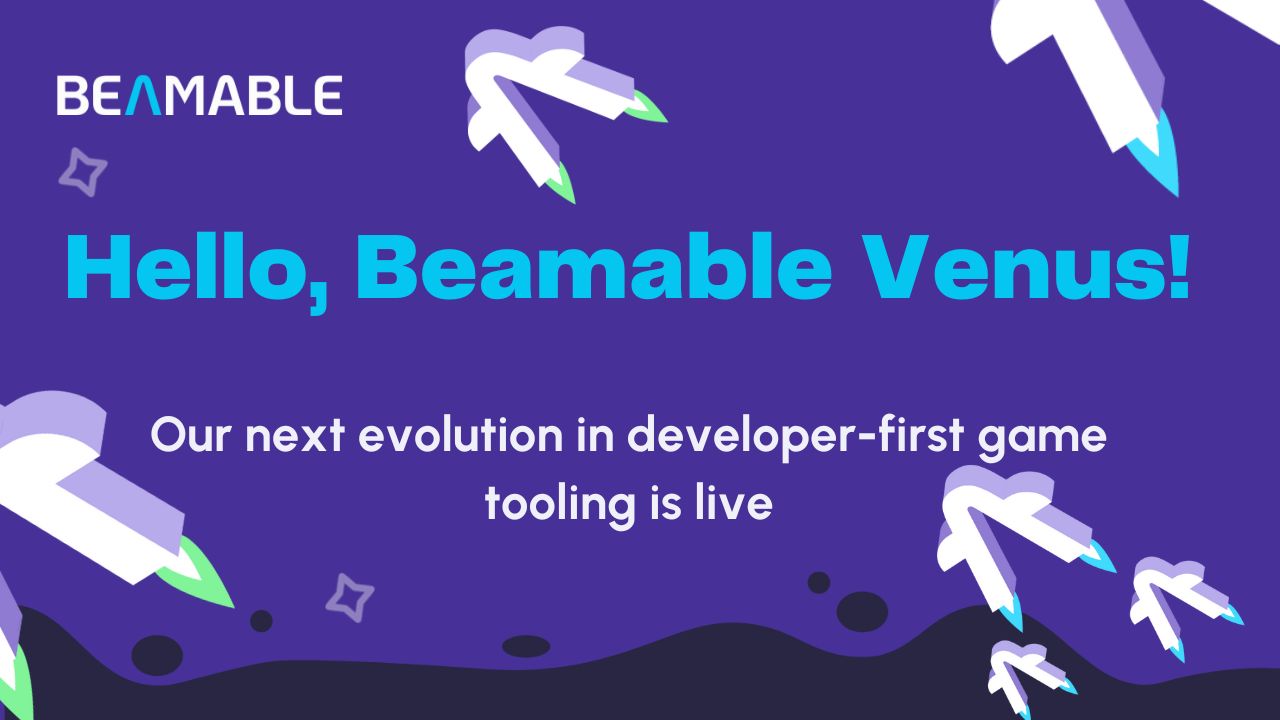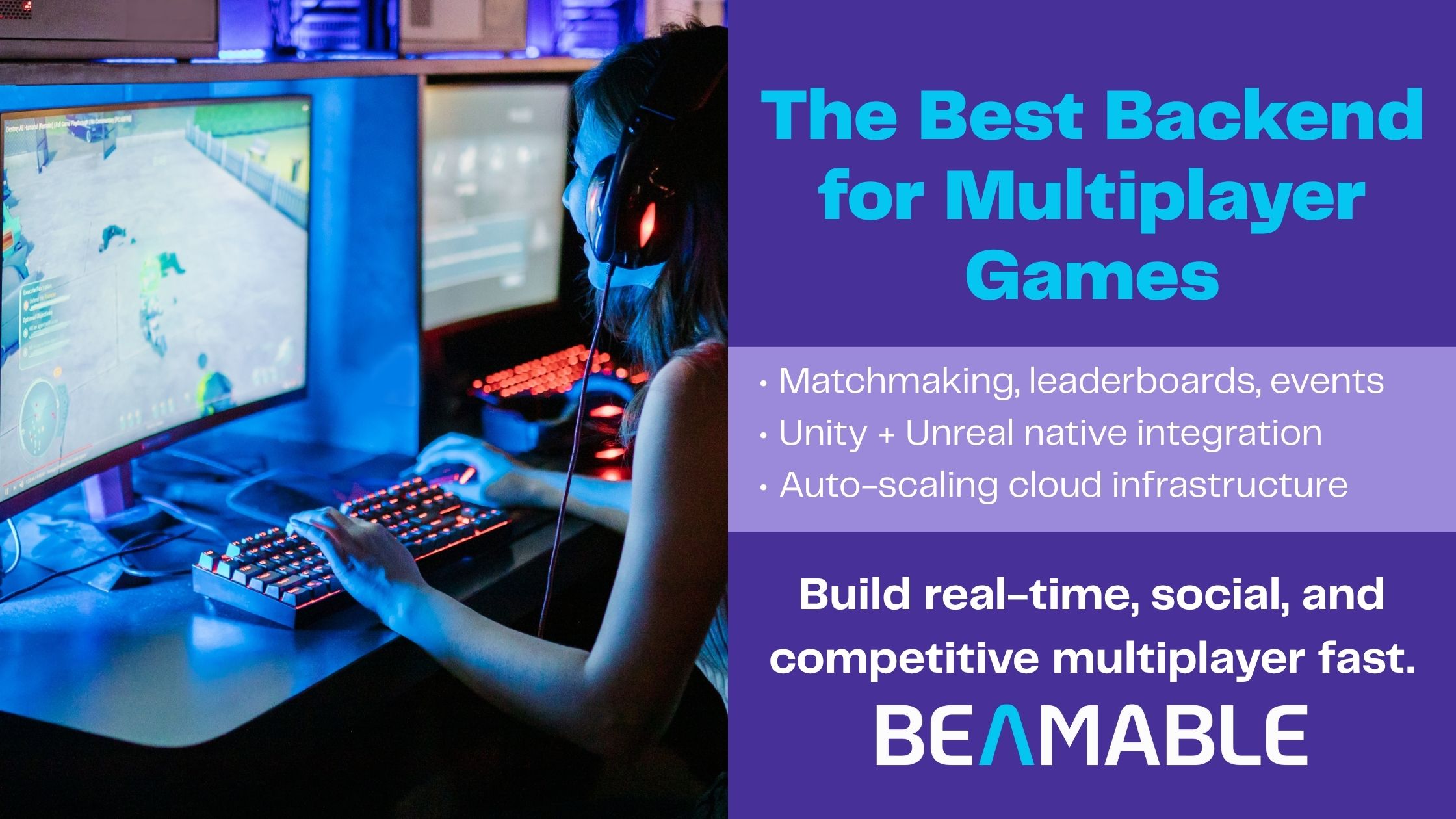Choosing the Right Backend: Beamable vs Nakama
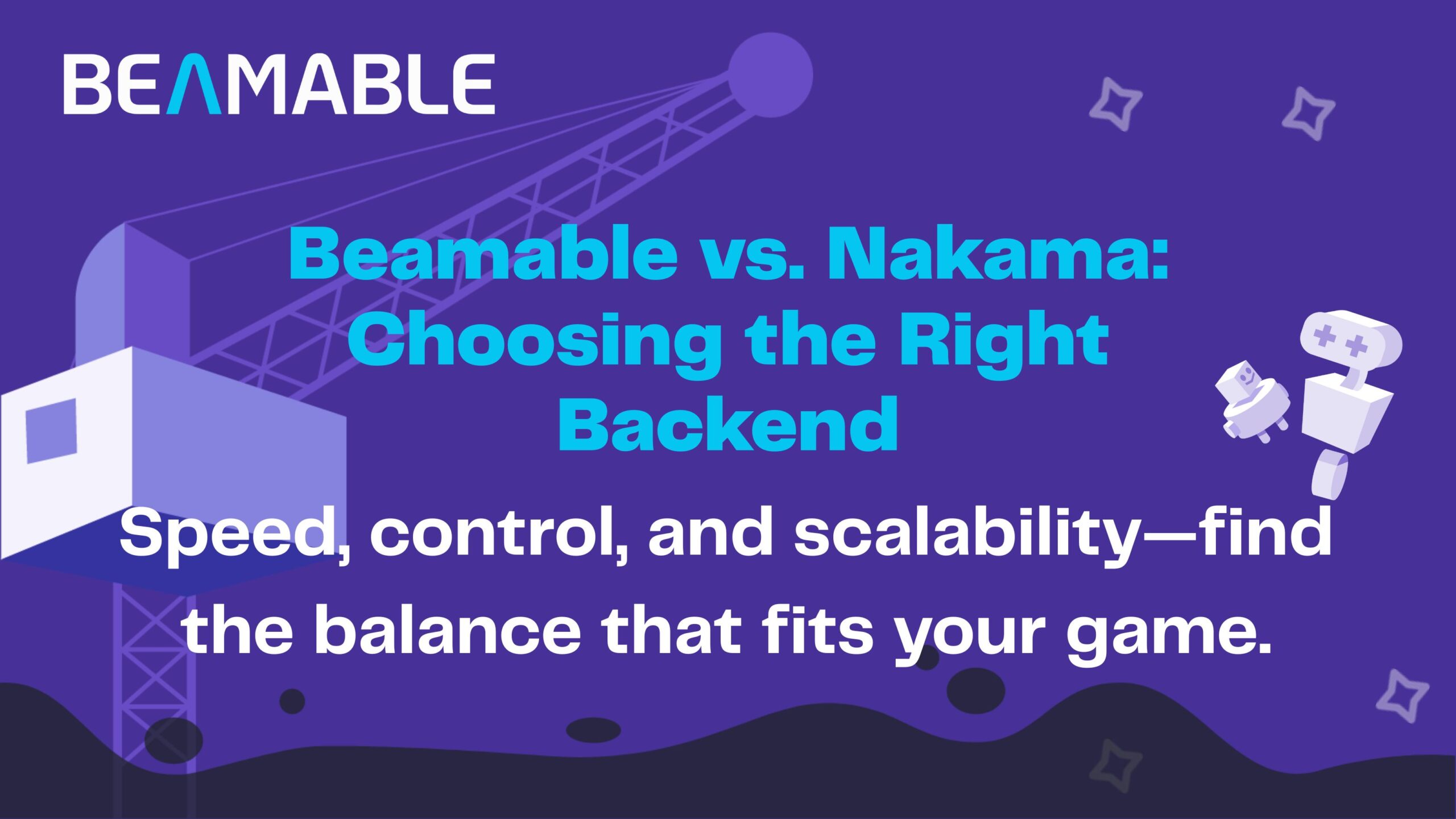
Choosing the Right Backend: Beamable vs Nakama
Building a live game means picking a backend you can trust. The right choice will shape how quickly you can launch, how easily you can evolve, and how efficiently you scale when your player base grows. Two of the most talked-about options are Beamable and Nakama (with Hiro from Heroic Labs), both capable but built for different kinds of teams and goals.
This guide breaks down what each platform offers, where they shine, and how to choose the one that best fits your studio.
What They Are. And How They Differ.
Beamable
Beamable is a fully managed backend platform designed for live and social games. It includes ready-made modules for identity, economy, cloud save, content updates, and live ops, all accessible through an intuitive dashboard and SDKs for Unity and Unreal.
Instead of standing up servers or wrangling infrastructure, developers can focus on gameplay while Beamable handles the backend complexity. The platform is also extensible – teams can build microservices or custom logic when they need specialized functionality.
Beamable is expanding its ecosystem through Beamable.Network, which connects decentralized compute infrastructure and open-source components to game development.
Beamable’s promise: “Ship fast. Don’t reinvent your backend. Focus on gameplay.”
Nakama + Hiro (Heroic Labs Ecosystem)
Nakama is an open-source, scalable game server that you can self-host or use through Heroic Labs’ managed offering. It provides backend essentials, including authentication, leaderboards, matchmaking, chat, and data storage.
Hiro, the Game Dev Kit built on top of Nakama, adds game-specific features such as economies, social tools, and easier client integrations.
With Nakama and Hiro, you gain maximum control over your server environment, but also assume the responsibility of running, scaling, and maintaining it.
Nakama’s value: “Complete control over your backend and gameplay logic.”
Beamable vs Nakama: Key Comparisons
| Dimension | Beamable | Nakama / Hiro |
| Ease and Time to Launch | Very fast. Most live-game features are ready out of the box, complete with built-in tools for live operations, content updates, and player management. | Moderate setup. Requires configuration and infrastructure management, even with Hiro simplifying the process. |
| Control and Flexibility | Beamable handles most backend needs while allowing extensions through microservices and APIs. | Complete control of server code, deployment, and scaling. Requires engineering-heavy teams. |
| Scalability and Performance | Managed scaling is built in. Beamable automatically adjusts as your game grows, with predictable reliability. | Scales horizontally with your infrastructure. You tune and manage performance directly. |
| Operational Overhead | Minimal. Beamable manages uptime, deployment, and infrastructure, allowing teams to focus on design and content. | High. You’re responsible for server ops, monitoring, and updates. |
| Cost Model | Predictable and transparent. Pay for convenience and managed reliability. | Higher operational expense and team overhead. |
| Live / Social Features | Deeply integrated modules for economy, identity, cloud save, and events, all production-ready. | Strong core features – including leaderboards, chat, storage, and matchmaking – are further extended through Hiro. |
| Vendor Lock-In | Beamable manages your infrastructure as part of its service, expediting and simplifying development. | Open source, allowing complete portability if you want to self-host or migrate. |
| Customization | Extend via Beamable’s APIs and microservices layer. | Full server customization with scripts or native modules. |
| Community and Openness | Growing community and expanding open-source ecosystem through Beamable.Network. | Long-established open-source community with access to core code. |
| Risk and Reliability | Beamable ensures high availability, updates, and security as part of its managed offering. | You control reliability and assume the responsibility for ensuring uptime and recovery. |
When to Choose Beamable
Beamable fits best when you:
- Want to launch quickly and iterate without building backend infrastructure from scratch.
- Prefer to spend time on gameplay, design, and content rather than DevOps.
- Need a robust set of built-in live-game features like economy, identity, and content updates.
- Value predictable costs and a managed, scalable platform.
- Operate a small or mid-sized studio where engineering time is limited.
- Are interested in connecting with decentralized or open-source infrastructure through Beamable.Network.
Beamable accelerates development by giving you a complete, production-ready backend that evolves with your game. You focus on creativity; Beamable takes care of the infrastructure.
When to Choose Nakama + Hiro
Nakama may be a better fit if you:
- Have an experienced backend team that wants complete control of the server environment.
- Need to incorporate highly specialized/differentiated infrastructure technology at the server layer.
- Want to optimize your own infrastructure and costs.
- Prefer a fully open-source model where you host, modify, and extend everything.
- Enjoy managing deployments, clusters, and upgrades in-house.
Nakama empowers teams that view backend engineering as part of their creative expression – it’s flexible, open, and deeply customizable.
What to Keep in Mind
Every backend comes with trade-offs. Managed services, such as Beamable, streamline development and reduce operational risk, while open systems, like Nakama, offer maximum autonomy but greater complexity.
Migration between systems can be challenging later on, so it’s worth aligning your team’s bandwidth, expertise, and growth trajectory early.
The good news: both platforms are proven, modern, and built to support serious live games.
The Bottom Line
If you’re building a live, evolving game and want to get to market quickly with a managed solution that scales as you grow, Beamable offers an ideal balance of speed, power, and reliability.
If your roadmap requires in-depth server customization and full infrastructure ownership, Nakama + Hiro may be your long-term solution.
Our take: For most studios, Beamable delivers the sweet spot – accelerating development, simplifying operations, and giving teams more time to make great games.
Final Thought
Choosing your backend isn’t about picking a winner. It’s about finding the right fit for your workflow and goals.
If you’d like a personalized comparison for your specific game type or scale, Beamable can help model the trade-offs and recommend the best path forward.
Let’s talk about your game project.
